I waited years to actually set foot in South Africa. An army of elephants couldn’t stifle my excitement when we touched down in Capetown and it was finally real. We had reached the land of penguins, Robben Island, Table Mountain, and endless adventure, and I was giddy with a child’s delight. This is the type of excitement I always wished for my students. It’s not easy for a teacher to fill each day’s history lesson with jumping out of your skin excitement or mind opening glee. Days filled with idea popping, hand raising, active, engaged participants are travel days. Getting outside those walls and experiencing the world does that. It opens minds, fills brains with endless questions. and encourages curiosity. I’ve yet to meet a traveler who has said, ‘I’ve had enough of travel’. Most of us in this crowd have that ‘bug’ that won’t dissipate. Now, how do we merge that worldly inquisitive nature with education?
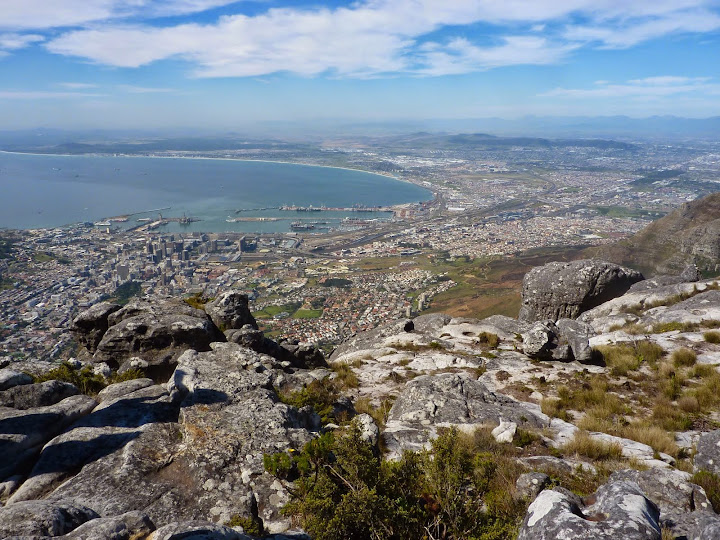
View from Table Mountain, Capetown, South Africa
Students deserve that type of adventure and excitement. Travel provides that global classroom filled with constant lessons. A hike on a mountain fosters physical education, science, wonder, climbing skills, and provides a chance to work with nature instead of against it. A visit to a museum shoves history off a page, popping you into an era well before your time. A conversation with a local often gleans more honesty, diversity, and tolerance than any assembly could ever offer. If it was feasible, I’d give each student an around the world ticket to use at their leisure to take them to places that will pique their interests or send them to worlds they’d never before known. I know first-hand the wonder it increases, thirst for knowledge it develops, and perspective it teaches in an instant. From the minute I arrived in South Africa, I never wanted to leave. How many teachers get to ever say that about students in their classroom?
Like any city, Capetown has much diversity to offer. Learning is everywhere. From a lesson about visas at the entry to converting your own currency into South African Rand, learning by doing is omnipresent. Some might want to head to the markets for colourful flair and beautiful artwork amidst hawkers, sweet-smelling aromas, and tourist trinkets. Others may journey for a dip in the Atlantic, and on a clear day grab a picture-perfect view of Capetown’s gem, Table Mountain. There are places & people in and out of this international city that turn students into global learners and people into global citizens. Africa awaits!
For a history lesson and delicious cuisine, there’s the Malay Quarter. This small area on the outskirts of the city is complete with tiny, closely spaced, brightly coloured houses. This was and still is a close-knit Cape Malay community (many whose ancestry were slaves in South Africa’s beginning). In earlier years, the government told villagers they could purchase their homes if they were renovated, but they would have to pay for the entire cost of the renovation individually. Some families were able to do so, while many others were not. South Africa is a country with one of the largest dichotomies between rich and poor. Regardless of economics or status, this neighborhood is known today throughout the world for the spectacular and flavourful Malay cuisine.
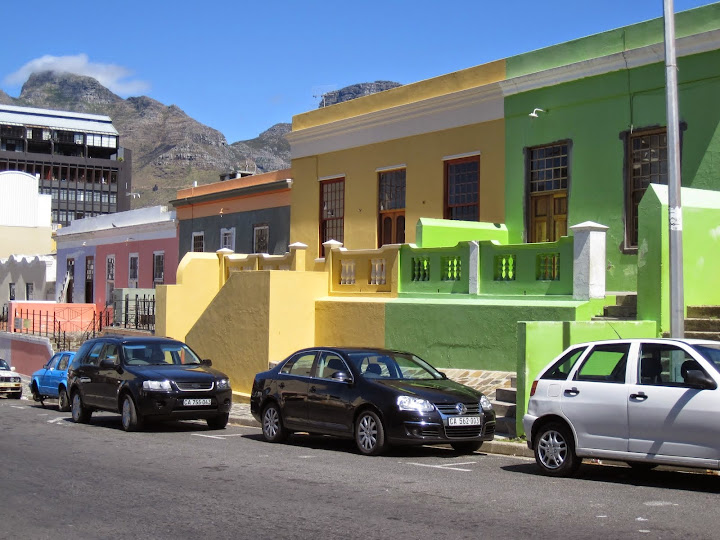
Malay Quarter, Capetown, South Africa
Then there are the natural elements offering minutes, hours or days of endless activity. Upon our arrival, we learned there is an unwritten rule in Capetown. ‘If the mountain is open…GO UP!’ Part of the reason is in order to journey up Table Mountain (if you choose not to hike) a funicular takes you to the top. With any gust of wind, the funicular closes. Whether you grab a bite at the café situated on the top of the mountain, or tote your own snacks, Table Mountain thrills. Here is experiential learning at its best. Reading signs, staying along the path, checking out native flora and fauna, climbing rocks, communicating with others, appreciating beauty, listening to the quiet, respecting nature, and taking in surroundings are all parts of growth and exploration in a global classroom.
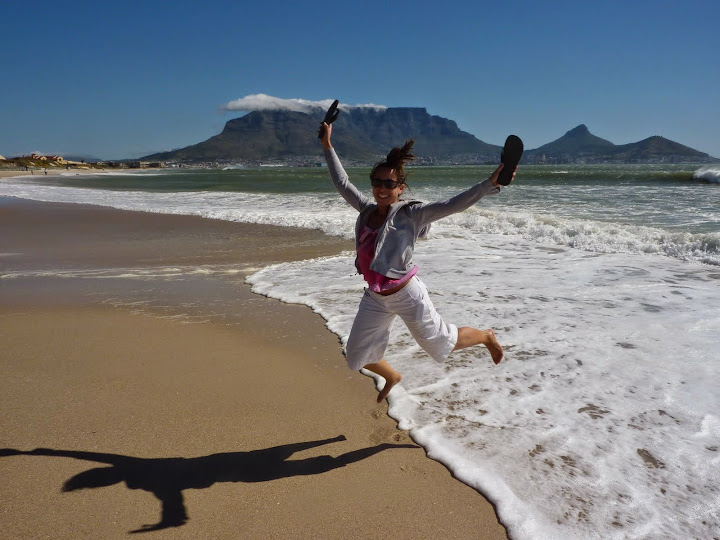
Table Mountain, Capetown, South Africa
For a continued geography lesson merged with nature, weather, and ecosystems, the Cape of Good Hope is an amazing site. Wind gusts that nearly blast you off the cliffs are ever present. If you’re lucky, you’ll get to snap that photo standing at the most southwesterly point in South Africa. On maiden voyages, explorers passed this spectacular point and so many years later, we get to stand at the same spot. Talk about a three-dimensional history lesson. If the geography and gravity of the sign, wind, and spot don’t grab your attention, there’s always the ‘Beware of Baboons’ sign for conversation, the beautiful Protea (South Africa’s native flower) that line the roadsides, or the wildlife passing by since you are now part of their landscape. In those minutes, I too felt like an explorer on a maiden voyage.

Cape of Good Hope, Capetown, South Africa
Getting up close and personal with African penguins at Boulder Beach in Simonstown invokes a childlike frenzy. For some, it might peak a fancy to later work with animals and wildlife. Others may decide to work with the environment to protect natural resources and land for these furry friends to safely live. Regardless of choice later in life, most will create memories of a day filled with moments of endless smiles. Full colonies of tuxedo laden creatures waddle along at their own pace, in their own world while guests ‘ooh and awe’ in their direction. Much larger than the Little Penguins on Australia’s Phillip Island, these darling creatures leap straight out of Happy Feet and seem quite eager to pose for photos.
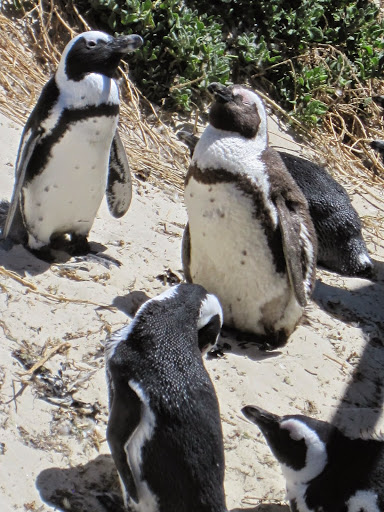
African penguins at Simonstown, Capetown, South Africa
Amidst all of the beauty, there are remnants of South Africa’s checkered past. In the mid-twentieth century, South Africa was rife with Apartheid. Built on earlier practices of racism, Apartheid made segregation into law. Not only did Apartheid forcibly separate people, it also gave those in power a platform to punish those who vehemently opposed it. Active in protests and movements since his early years, Nelson Mandela became a campaign leader and spokesperson for a civil disobedience campaign against injustice, racism and persecution. Imprisoned on Robben Island for his actions and beliefs, in 1994, this champion of human rights and freedom became South Africa’s first democratically elected president.

Mandela's cell on Robben Island, Capetown, South Africa
Robben Island is not an uplifting experience, but it is a telling one. Grab the ferry from the Nelson Mandela terminal at the Victoria and Alfred Waterfront (depending on the season, it’s best to book your tickets in advance). After a short video and approximately twenty-five minutes, busses emblazoned with statements of “Driven by freedom” and “We’re on this journey together” meet the boat to take guests on the start of the tour. The bus drives the entire island while a guide narrates its history. Originally designed to be a Leper Colony during South Africa’s Apartheid period, Robben Island was used to house political prisoners of the anti-Apartheid movement. Passing houses and buildings of people like Robert Sebukwe (who helped to start the anti-government movement); people are silent while taking in the injustice of the era amidst a background of seaside coastline. The bus trip takes about forty-five minutes, and as the bus lets out, guests are laughed at since we actually paid money to be ‘sent to prison’.
There you meet your guide, a former political prisoner, who directs the walking tour portion. Our guide was Glen. His sentence was cut short at the official end of Apartheid, yet he actually chose to return to Robben Island after he was released to live with his family as part of the one hundred-person community. As we followed him through the prison, he regaled us with stories of his life on the island and what the prisoners were forced to do. We saw Mandela’s cell. We visited the lime quarry where Mandela and other leaders were forced to work in all day long. With only one small cave used for shade, learning, teaching, and unfortunately a bathroom, their lives were extremely difficult. It’s places like these where our footsteps are truly tracing those of history. It’s places like these where you stop, think and take notice of life, activism, and truth, and are forced to stare inhumanity in the face. It’s places like these where we directly learn from history to be sure to not repeat in the future.
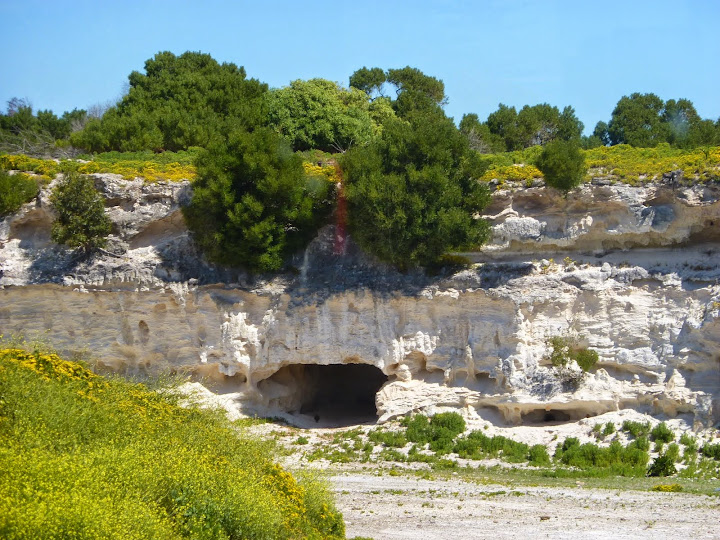
Lime quarry, Robben Island, Capetown, South Africa
We saw Mandela’s garden and learned how, since there was always discussion inside, he dubbed the prison ‘a university’. We learned how prisoners got their news (which was allowed to meet with a priest), and how through hollowed out heels in shoes and sliced pages in photo albums, Mandela’s manuscript (which had been hidden in his garden) was eventually smuggled out of prison. Piece by piece, courageous people took this risk to bring Mandela’s message to the world. Such grace, dignity, love of learning, devotion to ending injustice and incredible courage is to be learned from, listened to, embraced, and imitated. Mandela’s strength is a lesson in life and only part of the take away from this visit to Robben Island.
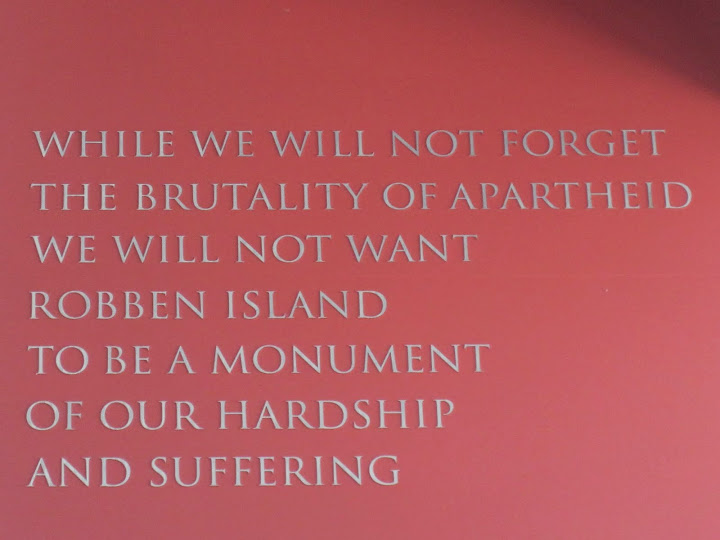
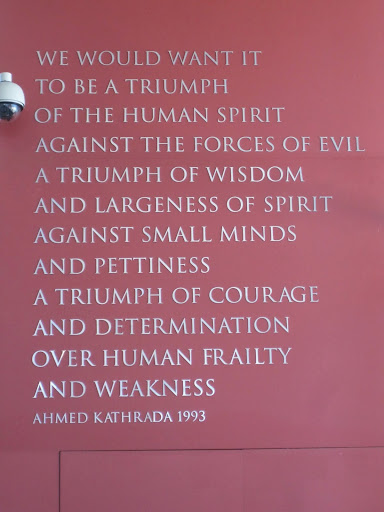
Capetown was my first stop in southern Africa. In only a few short days, this magical city showcased history, natural beauty, and a struggle for people’s rights. In US-based history classes, students learn about the struggle of Apartheid, Mandela’s fight for freedom, geographical colonization, and the economic struggle within a continent. Rarely, in a traditional school curriculum, is there time to see the beautiful and intricate gifts of cities and lives of its average citizens. Capetown showed me a small piece of South Africa, enticing me to return. Capetown welcomed me with rhythmic African music and uplifting voices of men and women in colourful dress singing daily along the waterfront. Capetown showed me the beauty of nature, the agony of struggle, the perseverance of a people, and the indomitable spirit of humanity. Capetown showed me history in living colour and made learning come alive. This is what I wish for all our students.
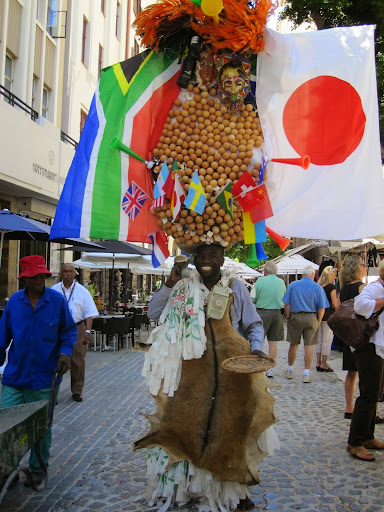
Capetown markets
Learn more:
South African National Parks (including Cape of Good Hope, Boulders, Table Mountain, and more)
South African History Online (where you can learn more about Apartheid, Mandela, and Robert Sebukwe)
Stacey Ebert, our Educational Travels Editor, is a traveler at heart who met her Australian-born husband while on a trip in New Zealand. Stacey was an extracurricular advisor and taught history in a Long Island public high school for over fifteen years, enjoying both the formal and informal educational practices. After a one year 'round the world honeymoon, travel and its many gifts changed her perspective. She has since left the educational world to focus on writing and travel. She is energetic and enthusiastic about long term travel, finding what makes you happy and making the leap. In her spare time she is an event planner, yogi, dark chocolate lover, and spends as much time as possible with her toes in the sand. Check out her website at thegiftoftravel.wordpress.com for more of her travel musings.
All photos courtesy and copyright Stacey Ebert
